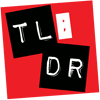What's the meaning of BC and AD?
Are BCE and CE the same or different?

The use of BC and AD or BCE and CE are all ways to identify years on the calendar. It is not taught in the Bible, but it's a normal system for recording dates that is used around the world. Neither of these systems use the year 0 because they indicate the year before and after a specific moment in our known timeline—ground zero of a pivotal event in human history. What was this ground zero event? The birth of Jesus Christ!
What do BC and AD stand for?
The purpose of dividing human history by the birth of Jesus Christ was to drive home the fact that His appearance in our world changed everything. John 3:16-17 tells us, "For God so loved the world, that he gave his only Son, that whoever believes in him should not perish but have eternal life. For God did not send his Son into the world to condemn the world, but in order that the world might be saved through him."
The common assumption is that BC stands for "Before Christ" and AD stands for "After Death," meaning "after the death of Christ." But that's only half-right. BC does stand for "Before Christ," but AD actually stands for Anno Domini, a Latin phrase meaning "in the year of our Lord." After Jesus' birth, we began living in "the year of our Lord." As Philippians 2:10-11 puts it, "...at the name of Jesus every knee should bow, in heaven and on earth and under the earth, and every tongue confess that Jesus Christ is Lord, to the glory of God the Father."
The BC/AD dating system was not fully implemented and accepted until several centuries after Jesus' death, so it's not too surprising that they got the exact year of His birth wrong when they were making their calculations. Scholars later realized that Jesus was actually born somewhere around 6-4 BC (not AD 1). The exactness doesn't really matter though; what matters is that this dating system uses Jesus Christ as the dividing line between the "old" and the "new." His birth, ministry, death, and resurrection were turning points in world history and the fate of humankind.
"Therefore, if anyone is in Christ, he is a new creation. The old has passed away; behold, the new has come." —2 Corinthians 5:17
What do BCE and CE stand for?
Using the term "Common Era" to place different years on the historic timeline has been gaining popularity because it doesn't use a religious annotation. Using "Common Era" can communicate the same meaning to both Christians and non-Christians alike without offending those who do not consider Jesus as "Lord." So C.E. stands for "Common Era" or "a year in our time," and BCE stands for "Before the Common Era."
Not using Christian terms (such as "Lord") is considered more sensitive and respectful to those without religious affiliations. Thus, BC/AD and BCE/CE are perfectly interchangeable, depending on the audience.
What's kind of funny though is that the dividing point is the SAME no matter what terms we use. Whether it is BC/AD or BCE/CE, the turning point between each distinction is STILL centered around the birth of Jesus Christ.

ALSO SEE:


TL;DR
The use of BC and AD or BCE and CE are all ways to identify years on the calendar. This system is not taught in the Bible but is used for recording dates around the world. BC stands for "Before Christ" (that is, Jesus' birth) and AD stands for Anno Domini, a Latin phrase meaning "in the year of our Lord" (after Jesus' birth). BCE and CE are derived from the term "Common Era" or "a year in our time" instead of relating to Christ. Use of BCE/CE is considered more sensitive to those who do not call Jesus "Lord," but these terms are interchangeable with BC/AD. No matter what terms we use, the dividing point is still the same—the birth of Jesus. The purpose of dividing human history in this way is to drive home the fact that Jesus' appearance in our world changed everything.

Writer & Managing Editor: Catiana (Cat)
Cat is the web producer and managing editor of 412teens.org. She is known as "412teens" on the 412teens Discord. She loves audiobooks, feeding the people she cares about, and using Christmas lights to illuminate a room. When Cat is not cooking, gardening, or practicing creativity, she enjoys spending time with her two adult kids, six socially-awkward cats, and her amazing friend-amily.
